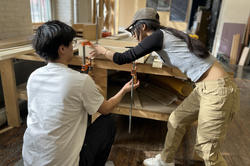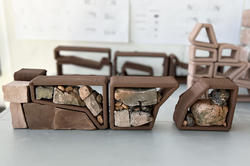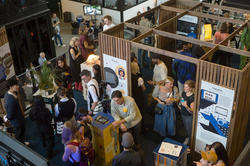Students are building a traditional boat out of wood and investigating the material’s environmental, ecological and sociocultural impacts.
RISD’s Sustainability Design Lab Focuses on Sheep’s Wool and Other Waste Fibers
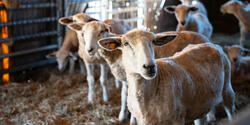
“Try not to move the fibers around too much in the pot or you’ll shock them and cause them to shrink,” said Materials Innovation & Fibershed Coordinator and RISD alum Clara Hayong Boberg 23 TX as they demonstrated traditional wool-working techniques at Ocean Hour Farm in Newport, RI. On the other side of the long barn, the shorn sheep that provided the natural materials bleated occasionally as RISD students enrolled in this fall’s Sustainability Design Lab studio gathered around Boberg and took turns handling the carting and Viking combs used to untangle the raw wool and remove any short fibers and impurities.
Ocean Hour Farm is a philanthropic organization created and funded by Eric and Wendy Schmidt with the mission to improve ocean health through regenerative land stewardship. Working with sibling organization 11th Hour Racing, Ocean Hour aims to restore a balanced relationship between people and planet.
The organization’s mission is closely aligned to that of RISD’s Sustainability Design Lab. Established in 2023 and sponsored by generous grants from the Sparks Fund and the Angelo Donghia Foundation, the interdisciplinary lab fosters a better understanding of how low-impact design strategies can shape both the future of the built environment and the socially responsible practices needed to create more inclusive material cultures. It offers an annual rotation of classes focused on such topics as adaptive reuse, alternative energy, rights of nature, public health, and land use.


Interior Architecture Professor Markus Berger and Architecture faculty member Leeland McPhail are co-teaching this fall’s studio, The Remainder: A Waste Fiber Material Exploration, focused on exploring the potential of discarded sheep’s wool and other waste cellulose as raw materials for future architectures, interior systems, and designed objects.
“Embracing remainders shifts our understanding toward circularity and regeneration rather than linear extraction and disposal,” Berger explains. “It encourages a sustainable approach in which waste becomes resource, imperfection fuels innovation, and complexity is valued as resilience. That kind of approach fosters ecological balance and responsible stewardship of resources.”
Course goals include learning to synthesize insights from research, fieldwork, and material testing into compelling speculative or applied design outcomes; understanding materials as carriers of histories, values, and ecological consequences; and engaging deeply with the principles of circular economy: reuse, repair, repurpose, and recycle.
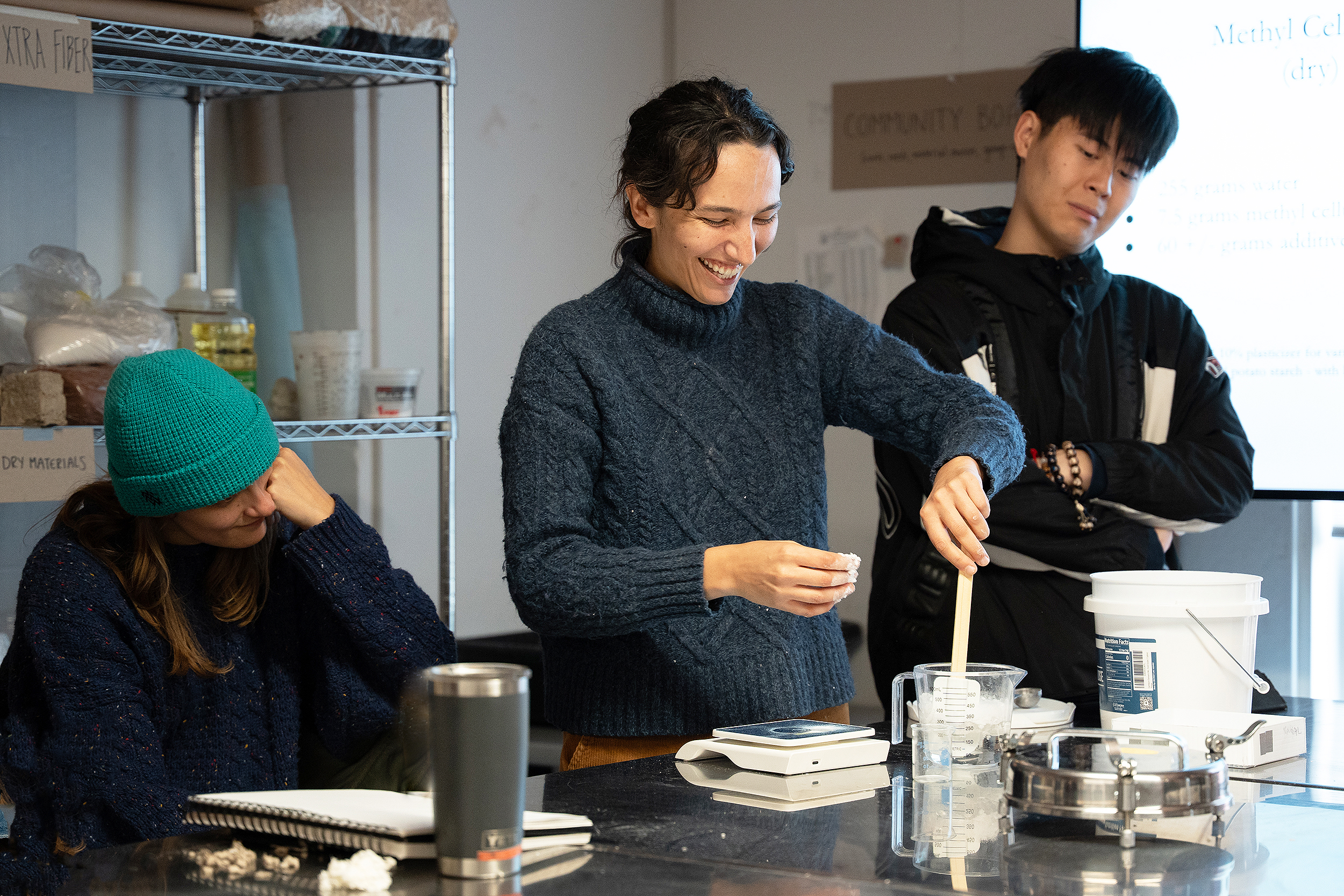
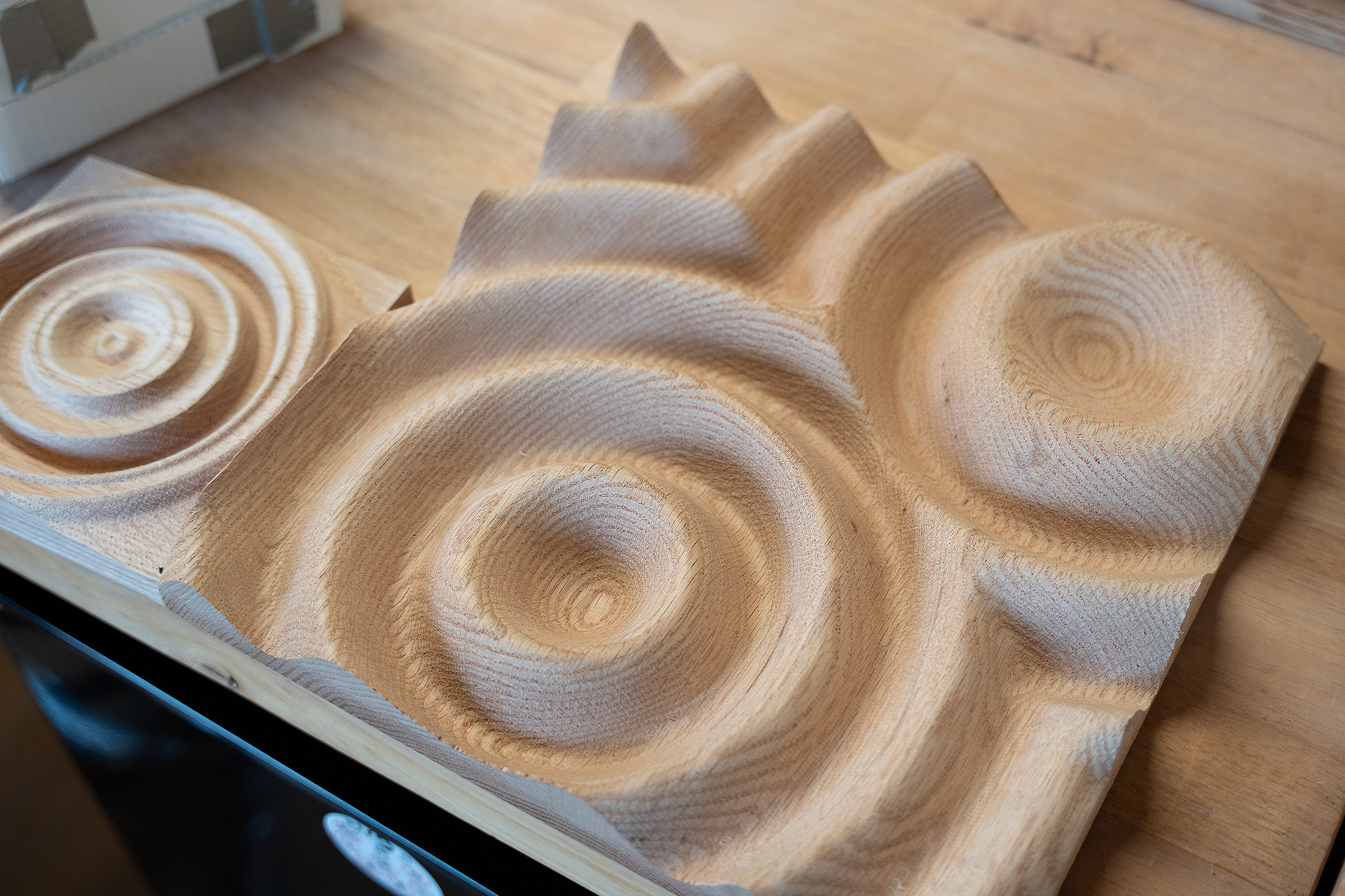
“The lab cultivates a culture of experimentation, where failure is generative and waste is not simply managed, but reimagined as a source of possibility and renewal,” says McPhail. “By bridging material exploration with design research, the studio challenges students to develop thoughtful, innovative, and ecologically responsible responses to contemporary sustainability challenges.”
The raw materials the class processed at the farm were combined with bio-based binders, natural adhesives, and fillers back at RISD’s Weybosset Street Studios. After learning some standard biomaterials recipes, students were encouraged to experiment in the studio and test the new materials they were creating in relation to durability, toxicity, and environmental impact.
Teaching fellow and recent RISD alum Taylor Jais MLA 25 demonstrated how to use an industrial-grade grinder to mix the materials with such binders as methylcellulose and sodium alginate. “Keep track of the weights of each material you’re using for the sake of repeatability,” they advised the class.
Once the mixtures thicken into gels, which typically takes about 24 hours, they’ll be poured into molds the students have prepared in order to form tiles and other 3D forms. “There are no particular expectations in terms of outcomes,” says Berger. “The experimentation is the assignment. The goal is to ‘listen’ to what the materials tell us about what they can become.”
Simone Solondz / photos by Kaylee Pugliese
November 10, 2025
